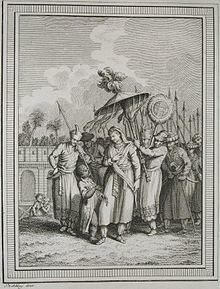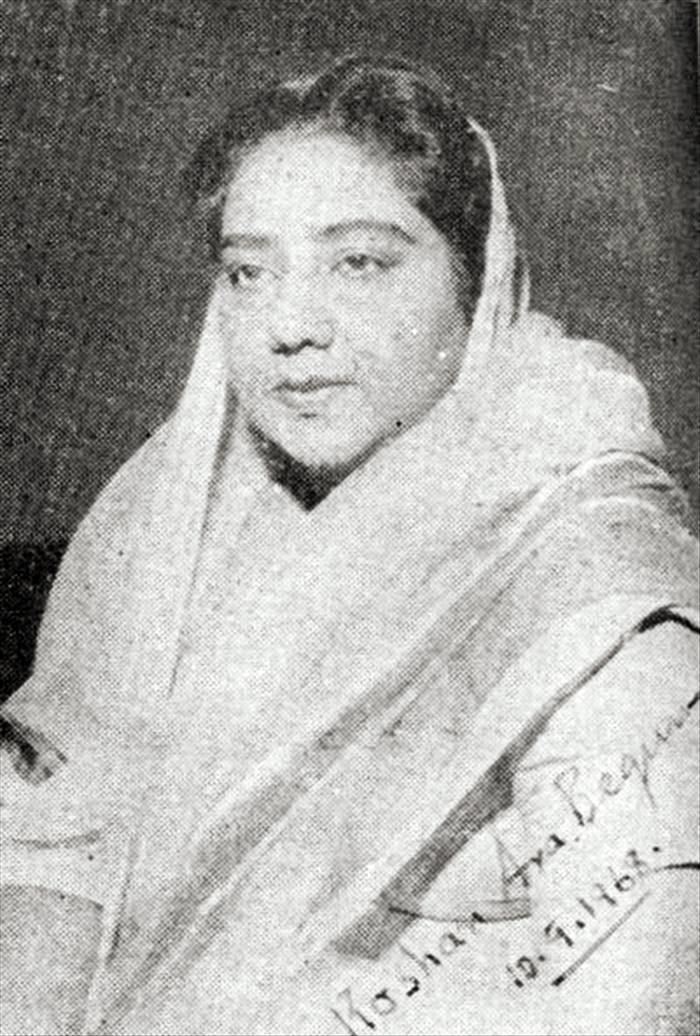Tenure from 31 July 1658 Parents Shah Jahan, Mumtaz Mahal | Name Roshanara Begum Siblings Aurangzeb | |
 | ||
Grandparents Jahangir, Taj Bibi Bilqis Makani, Abul-Hasan ibn Mirza Ghiyas Beg, Plondregi Begum Similar People | ||
Ustad shaukat hussain and roshanara begum a short clip
Roshanara Begum (Urdu: شاهزادی روشن آرا بیگم ) (3 September 1617 – 11 September 1671) was a Mughal princess and the second daughter of Mughal emperor Shah Jahan and his chief consort, Empress Mumtaz Mahal. Roshanara was a brilliant woman, a talented poet, the mastermind behind her brother, Aurangazeb's accession to the Mughal throne and, by the time of her death in 1671, one of the most notorious women in the Mughal Empire.
Contents

Today, however, Roshanara is best known for the Roshanara Bagh, a pleasure garden located in north Delhi, next to Kamala Nagar Road and Grand Trunk Road. The present-day Roshanara Club which was constructed in the late 19th century by the British is a famous country club that was actually originally a part of the Roshanara Bagh.
Family
Of Roshanara's four brother's, the oldest, Dara Shikoh, was Shah Jahan's favourite son and heir apparent to the Peacock Throne. Shah Shuja, the second son, was the rebellious Governor of Bengal, with open designs on his father's throne. Aurangzeb, the third son, was the nominal Governor of Deccan. Murad, the youngest son, was granted Governorship of Gujarat, at which position he proved so weak and so ineffectual that Shah Jahan had him stripped of his titles, offering them to Dara Shikoh, instead. This precipitated a family struggle between Shah Jahan and his embittered younger sons, who resolved to depose the aging emperor and seize the throne for themselves. During this power struggle, Dara Shikoh received the support of his oldest sister, Jahanara Begum while Roshanara Begum sided with Aurangzeb, instead.
Rise to power
Roshanara's rise to power began when she successfully foiled a plot by her father and Dara Shikoh to kill Aurangzeb. According to history, Shah Jahan sent a letter of invitation to Aurangzeb to visit Delhi, in order to peacefully resolve the family crisis. In truth, however, Shah Jahan planned to capture, imprison and kill Aurangazeb in prison as he viewed his third son as a serious threat to the throne. When Roshanara got wind of her father's plots, she sent a messenger to Aurangzeb, outlining their father's true intentions, and warning Aurangazeb to stay away from Delhi.
Aurangazeb was extremely grateful to Roshanara for her timely warning. When the war of succession was resolved in favour of Aurangzeb, she quickly became a powerful figure at court. Fearing that Dara Shikoh would kill her for her role in the war of succession if he ever returned to power, Roshanara insisted that Aurangazeb order Dara's execution. Legend has it that Dara was bound in chains, paraded around Chandni Chowk and beheaded. Roshanara then had his bloody head wrapped in a golden turban, packaged neatly and sent to her father as a gift from Aurangzeb and her. Shah Jahan, who opened the package just as he was sitting down to dinner, was so distressed by the sight of his favorite son's head that he fell unconscious to the floor. He remained in a stupor for many days after the incident.
Roshanara's relationship with her older sister, Jahanara, was troubled and tinged by jealousy as the latter was undisputedly their father's favourite daughter. Roshanara scored a major victory against her sister when Aurangazeb, who had been displeased with Jahanara for supporting their father and brother during the war of succession, removed her (Jahanara) from her position as head of the Imperial harem, installing Roshanara in her stead.
Eventually, however, Roshanara and Aurangzeb fell out with each other. Mughal princesses were obliged to remain single since the time of Akbar so their offspring would not make a challenge for the throne. Roshanara was rumoured to have taken on lovers, which was not viewed well by Aurangzeb. In addition, she ruled Aurangzeb's harem with an iron hand and earned the hatred of her brother's many wives. She also had a love of gold and land, and accumulated wealth on a large scale, often by corrupt methods. This resulted in numerous complaints against her, none of which were brought to justice due to her position at Court. In addition, she blatantly misused the sweeping powers Aurangazeb had granted her just before leaving for his long military campaign in the Deccan, to further her own financial ends.
Her enemies soon brought these acts of financial and moral turpitude to Aurangazeb's notice. Himself a very strict Muslim, Aurangzeb frowned on Roshanara's libertine lifestyle and her greedy nature. On his return to Delhi, he stripped Roshanara of her powers, banished her from his court, and ordered her to remain in seclusion and live a pious life in her garden palace outside of Delhi.
Death
After Aurangzeb’s rule was established, Roshanara was still afraid of the implications of her actions and asked Aurangzeb to build a palace for her away from the walled city. She decided to stay away from politics which was getting dangerous and uncertain. Roshanara chose to spend an esoteric life in her palace in Delhi, surrounded by a thick forest. She never married and lived in her palace till the end of her life. Her palace in the middle of the Roshanara garden is a reminder of the crucial role she played in the history of India. She died at the age of 54. Aurangzeb had her interred in the Roshanara Bagh, a garden that she had designed and commissioned herself.
